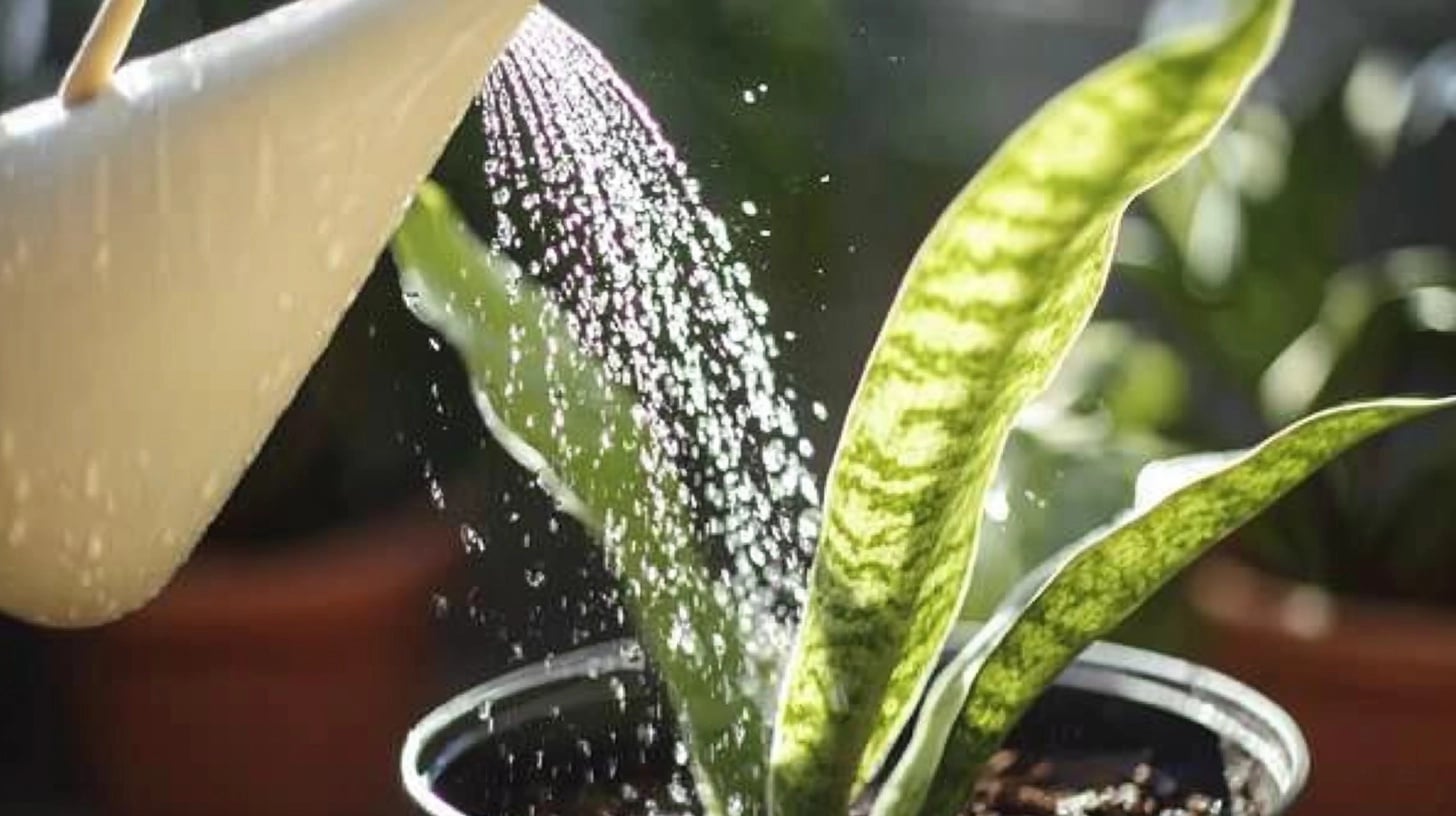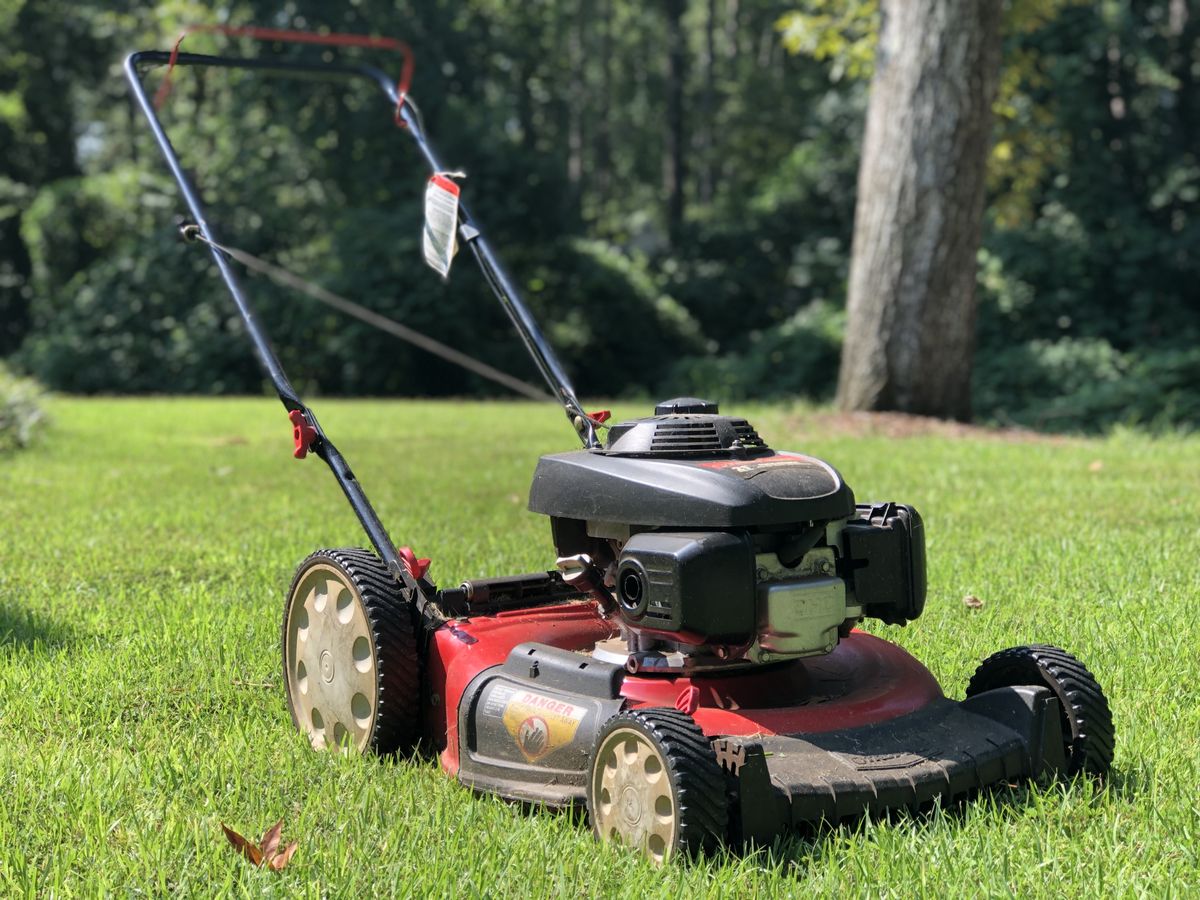How Often Should You Water a Snake Plant?
Snake plants are among the most popular houseplants due to their striking appearance and minimal care requirements.
These sturdy plants, scientifically known as Sansevieria, have earned their place in homes worldwide because they can go for long periods without water.
Yet, proper watering is key to keeping your snake plant healthy and growing well. Many plant owners struggle with the right watering schedule for their snake plants.
Too much water can harm the roots, while too little might slow growth. This guide will show exactly when and how to water your snake plant.
We’ll look at important factors like seasons, pot types, and your home’s environment that affect how often your plant needs water.
Understanding these basics allows you to create the right watering routine for your snake plant and help it thrive.
Understanding the Water Needs of Snake Plant

Snake plants come from the dry, rocky regions of West Africa, where rainfall is limited and sporadic.
Their natural habitat includes countries like Nigeria and Congo, where they grow in areas that experience long dry spells followed by brief rainy periods.
This background explains why these plants do so well with minimal water.
In their original environment, snake plants developed special features to help them survive:
- Thick, fleshy leaves that store water efficiently
- Strong root systems that can absorb water quickly when it’s available
- Specialized leaf coating that reduces water loss
- Modified plant cells that hold extra water for dry times
These natural adaptations make snake plants excellent at handling drought conditions. The plants learned to thrive with inconsistent water access to survive extended periods without water in our homes.
Understanding this natural habitat helps explain why overwatering often causes more problems than underwatering for snake plants. They’re built to handle dry conditions but can struggle when kept too wet.
Guidelines for Watering the Snake Plant
Most snake plant owners make the mistake of watering too often. Here’s the simple truth: your snake plant needs water only when the soil is completely dry. This consistent rule helps prevent the most common issue – root rot from overwatering.
Watering Schedule
Here’s your straightforward guide for how often to water:
- Most homes – Every 3-4 weeks: This schedule fits the average indoor environment with moderate light and a temperature around 65-75°F. Your snake plant will thrive with this basic timing.
- Summer months – Every 2-3 weeks: When temperatures rise and days get longer, your plant uses more water. Watch for faster soil drying during peak summer, especially if your plant sits near sunny windows.
- Winter months – Every 4-6 weeks: Your plant grows slower in winter. Less light and cooler temperatures mean it needs less water. Many healthy snake plants can go 6 weeks between winter waterings.
Skip the calendar and check your soil instead. Never water until the top 2 inches feel dry.
How Much Water to Add?
Pour water slowly until it runs out of the drainage holes. This method ensures thorough root coverage:
- 6-inch pots need 1 cup: Water flows evenly through smaller pots. One cup typically saturates the soil without oversaturation.
- 8-inch pots need 1.5 cups: Medium pots require more water to reach all roots. Pour slowly to allow proper absorption.
- 10-inch pots need 2 cups: Larger pots need thorough soaking. The extra water helps reach deeper roots.
Important: Empty the drainage saucer 15 minutes after watering. Standing water leads to root problems.
Quick Soil Check
Before you grab the watering can, use these reliable tests:
- Stick your finger 2 inches deep: Push your finger into the soil up to your second knuckle. Any hint of moisture means waiting longer.
- Lift the pot—it should feel light: Compare the pot’s dry weight to its weight after watering. You’ll learn to feel when it needs water.
- Look at the soil surface: When dry, the top layer turns lighter. Small cracks might appear at the edges.
Remember: It’s better to underwater than overwater. Your snake plant stores water in its leaves, helping it survive dry periods. When in doubt, wait another day.
Factors Influencing Watering Frequency
Understanding what affects your snake plant’s water needs helps you adjust your care. Let’s look at each factor that changes how often you need to water.
Seasonal Changes
During summer months, snake plants need water more frequently.
The longer days and warmer temperatures speed up soil drying.
A consistent watering approach during seasonal changes helps your plant thrive.
Key seasonal adjustments:
- Summer: Water every 2-3 weeks, preferably in the mornings
- Winter: Water every 4-6 weeks, reduce frequency
- Fall/Spring: Water every 3-4 weeks, watch temperature changes
Check soil dryness regardless of season. Adjust based on the plant’s response.
Environmental Conditions
Your home’s environment directly impacts how often your snake plant needs water.
Both light and temperature work together to affect soil moisture levels, making it crucial to understand your plant’s specific spot.
Indoor environment factors:
- Bright indirect light needs more frequent watering
- Low light spots require 50% less water
- Rooms at 75-85°F need regular moisture checks
- Cool rooms (65-70°F) need less frequent watering
- Areas near AC or heating vents require extra monitoring
Pot Characteristics
The container you choose for your snake plant significantly affects its watering needs. Different materials and sizes create unique moisture conditions that influence how often you need water.
Container considerations:
- Clay pots need water every 2-3 weeks
- Plastic containers can go 3-4 weeks between watering
- Glazed pots maintain moisture for 2-3 weeks
- Small pots (4-6 inches) dry out faster
- Large pots (10+ inches) hold moisture longer
How to Tell When Your Snake Plant Needs Water
Many plant owners struggle with the right watering timing. Instead of following a strict schedule, learn to read your plant’s signals for the most accurate watering.
Checking Soil Dryness
The soil test is the most reliable way to determine when your snake plant needs water. This simple check prevents overwatering and underwatering problems.
Essential soil checks:
- Push finger 2 inches into soil – water only if completely dry
- Look for light-colored, crumbly topsoil
- Notice if soil pulls away from pot edges
- Check bottom drainage holes for moisture
- Use a wooden skewer for deep pots
Observing Physical Signs
Snake plants communicate their water needs through visible changes. Knowing these signs helps you water at the right time and avoid plant stress.
Plant indicators:
- Healthy leaves feel firm and thick
- Thirsty leaves become slightly soft
- Wrinkled leaves signal prolonged dryness
- Yellowing leaves often mean overwatering
- A mushy base indicates too much water
Bonus Tip: The Lift Test
Lift your pot before and after watering to learn how weight changes with moisture levels. A light pot usually means it’s time to water, while a heavy pot suggests waiting longer.
Conclusion
Snake plants are remarkably sturdy houseplants that forgive most care mistakes. However, proper watering differentiates between a surviving plant and a thriving one.
Throughout this guide, successful snake plant care relies more on observation than strict schedules.
The key takeaway is simple: always check your soil before watering. These plants prefer drying out between waterings and show clear signs when they need moisture.
Watering every 3-4 weeks works well in most homes, but your specific environment might need adjustments.
Remember that too little water causes less damage than too much. Snake plants store water in their leaves, giving you time to correct underwatering. However, overwatering can quickly lead to root rot, a much more serious problem.
Seasonal changes significantly affect your plant’s water needs. Expect to water more in warm, bright summer months and less during cool, darker winter months.
Your home’s conditions—light levels, temperature, and humidity—all play important roles in how often your plant needs water.
Watch your plant’s signals, maintain good drainage, and adjust your care as seasons change. With these principles in mind, your snake plant will stay healthy and continue growing for years.
Frequently Asked Questions
How Do I Know if I’ve Overwatered My Snake Plant?
Look for yellow leaves, soft stems near the soil, and a foul smell from the pot. If the soil stays wet for over a week, you’ll likely overwater.
Can Snake Plants Survive without Water for Extended Periods?
Yes, snake plants can survive 4-6 weeks without water. Their thick leaves store moisture, helping them handle dry spells. However, regular watering keeps them healthy.
Should I Mist My Snake Plant?
No, snake plants don’t need misting. They prefer dry air, and their leaves can rot if kept wet. Instead, focus on proper soil watering.
Why Are My Snake Plant’s Leaves Falling Over?
Falling leaves often mean too much water. Healthy leaves stand straight and firm. If leaves feel soft and bend easily, reduce watering frequency.
What’s the Best Time of Day to Water?
Water in the morning. This gives excess moisture time to evaporate and helps prevent root problems. Avoid evening watering when moisture sits longer.







